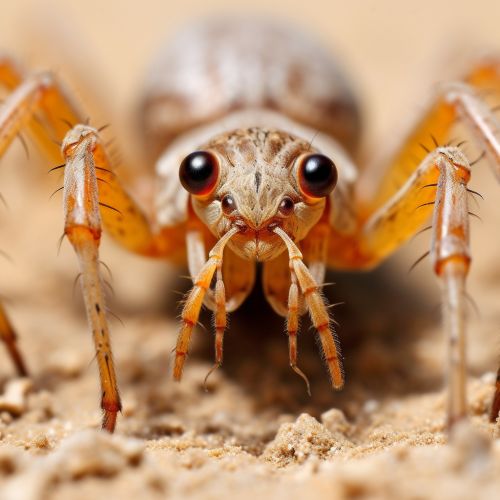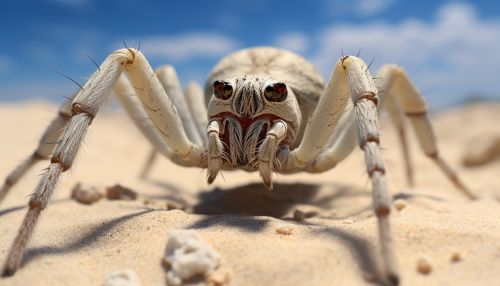Camel Spider
Taxonomy and Description


The camel spider is a member of the order Solifugae, a group of arachnids that also includes spiders and scorpions. Despite their common name, camel spiders are not true spiders, but they share many similarities, including the presence of eight legs and a pair of pedipalps, or sensory appendages, near the mouth. They are also known as wind scorpions, sun spiders, and solifuges.
Camel spiders are characterized by their large, powerful chelicerae, or jaws, which they use for hunting and feeding. These chelicerae are often nearly one-third of the body length and are capable of crushing or slicing through small insects and other prey. The body of a camel spider is divided into two parts: the cephalothorax (head and thorax combined) and the abdomen. They lack venom glands and rely on their speed and strong jaws to catch and kill prey.
Distribution and Habitat
Camel spiders are found in arid regions around the world, including the deserts of the Middle East, North Africa, and the southwestern United States. They prefer sandy environments and are often found in desert and semi-desert habitats. However, some species can also be found in grassland and forest environments. They are primarily nocturnal creatures, seeking shelter during the day under rocks, logs, or in burrows to avoid the intense heat.
Behavior and Ecology
Camel spiders are solitary creatures, known for their impressive speed and agility. They are among the fastest arachnids, capable of reaching speeds up to 10 miles per hour. They are primarily nocturnal, hunting at night and hiding during the day to avoid the heat. Their diet consists mainly of insects, but they have been known to feed on larger prey, including small lizards and rodents.
Camel spiders are not web builders. Instead, they are active hunters, using their speed and agility to chase down and capture prey. They use their large chelicerae to crush their prey before consuming it. Despite their fearsome appearance and reputation, camel spiders are not dangerous to humans. They are non-venomous and their bite, while painful, is not harmful unless it becomes infected.
Reproduction and Life Cycle
The mating behavior of camel spiders is unique among arachnids. The male will perform a complex courtship dance to attract a female. If the female is receptive, she will allow the male to deposit his sperm into her genital opening using his chelicerae. The female will then lay her eggs in a burrow and guard them until they hatch. The young camel spiders, or solifuglings, will undergo several molts before reaching adulthood.
Human Interaction
While camel spiders are often feared due to their large size and aggressive behavior, they are not a threat to humans. They do not possess venom and their bite is not dangerous unless it becomes infected. In some cultures, camel spiders are considered beneficial as they help control pest populations.
Conservation Status
Most species of camel spiders are not considered threatened or endangered. However, like many desert-dwelling species, they may be vulnerable to habitat loss due to human activities such as development and climate change.
